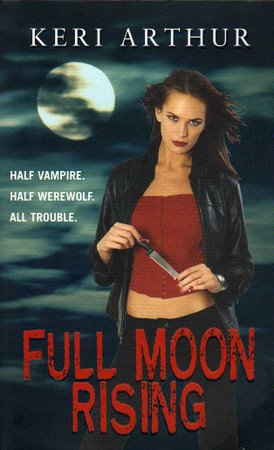Australian Horror
INTERVIEWS
ARTICLES
Finding Carnacki the Ghost Finder
OUR BOOKS
INFORMATION
REVIEWS
809 Jacob Street, by Marty Young
After The Bloodwood Staff, by Laura E. Goodin
The Art of Effective Dreaming, by Gillian Polack
Bad Blood, by Gary Kemble
Black City, by Christian Read
The Black Crusade, by Richard Harland
The Body Horror Book, by C. J. Fitzpatrick
Clowns at Midnight, by Terry Dowling
Dead City, by Christian D. Read
Dead Europe, by Christos Tsiolkas
Devouring Dark, by Alan Baxter
The Dreaming, by Queenie Chan
Fragments of a Broken Land: Valarl Undead, by Robert Hood
Full Moon Rising, by Keri Arthur
Gothic Hospital, by Gary Crew
The Grief Hole, by Kaaron Warren
Grimoire, by Kim Wilkins
Hollow House, by Greg Chapman
My Sister Rosa, by Justine Larbalestier
Path of Night, by Dirk Flinthart
The Last Days, by Andrew Masterson
Lotus Blue, by Cat Sparks
Love Cries, by Peter Blazey, etc (ed)
Netherkind, by Greg Chapman
Nil-Pray, by Christian Read
The Opposite of Life, by Narrelle M. Harris
The Road, by Catherine Jinks
Perfections, by Kirstyn McDermott
Sabriel, by Garth Nix
Salvage, by Jason Nahrung
The Scarlet Rider, by Lucy Sussex
Skin Deep, by Gary Kemble
Snake City, by Christian D. Read
The Tax Inspector, by Peter Carey
Tide of Stone, by Kaaron Warren
The Time of the Ghosts, by Gillian Polack
Vampire Cities, by D'Ettut
While I Live, by John Marsden
The Year of the Fruitcake, by Gillian Polack
2007 A Night of Horror Film Festival
OTHER HORROR PAGES
Full Moon Rising
by Keri Arthur. Piatkus, 2007 (2006), ISBN 0749938137.
A review by Kyla Ward
 He made a gargling sound, and froze. Dead or not, vampires were still men and still very attached to their dangly bits.
He made a gargling sound, and froze. Dead or not, vampires were still men and still very attached to their dangly bits.
Supernatural detectives seem to be the current flavour. A search of the average bookshop turns up several series, of which the Harry Dresden books (Jim Butcher) and the Blood Books (Tanya Huff) have made the leap to television. While the traditional P.I. is the most common, there are cops and other forms of civil servant walking the line between humankind and the not so. Such as Riley Jenson, guardian liaison at the Directorate of Other Races in Melbourne city. Riley herself is mostly werewolf with just a touch of vampire.
Natural hybrids such as Riley and her twin brother Rhoan are very rare, even in a world with such a variety of Other Races as this. Even in a world where, to judge by this book, the amount of bonking going on is truly incredible. It's mostly because in the week before a full moon, werewolves are seized by a progressively uncontrollable urge to mate. Werewolf society is built around this fact, which causes no end of friction between them and other races. So to speak. Riley theoretically has more control than most, but when a handsome vampire appears stark naked outside your apartment one morning, why fight it? He's actually there for her brother, but Rhoan has mysteriously disappeared.
The setting is "now but different". Apart from the supernatural presence, which appears to be just the status quo, genetic science has gotten a boost. Which makes sense and provides much of the book's intrigue, alongside Riley's search for Rhoan. How else the presence of non-humans has changed the world, and how far back this states of affairs goes, is not really explored, but this is the first in a series and the frenetic pace doesn't allow much time for reflection. Riley has barely had time to become concerned about her brother before she is up to her neck in assassins, kidnappers, a conspiracy against the Directorate, a vampire with an agenda (who gets dressed eventually) and a regular mating partner gone obsessive. And it's the week before a full moon. Most exposition takes place as a kind of foreplay.
A point of difference between this book and others in its market niche is that there is very little human presence. Riley is a werewolf/vampire hybrid, her boss is a vampire, the nightclub bouncer is a "shifter": even the prostitutes working St Kilda Road are non-human. And in my opinion, this presents a challenge the book does not meet. Riley identifies as a werewolf. She criticises humans and at one point bemoans a vampire's "human" prejudices. But there really isn't much in the text that differentiates her from any feisty redhead with "needs" and "urges" (and a lot of stamina). Transforming into a wolf is presented as a purely functional thing, and she remembers little or nothing of what happens when her instincts do take over. There is some good plotting here and action aplenty, but no sense of anything truly inhuman.
Keri Arthur is an Australian writer who has a substantial body of work out from Imajinn Books, an American small press publisher specialising in paranormal romance. I am unaware of any distribution point for these works in Australia and I have not read them. The first edition of this series, released in the US by Bantam Dell, also did not make it here, but Piatkus has apparently also bought the rights to her Imajinn backlist.
Overall, this is a fast and quite amusing read, perhaps as much romance as detective story, which makes the book itself a kind of hybrid. As said, it is the first in a series, and the end of Full Moon Rising points directly to the start of Kissing Sin, which has been released simultaneously by Piatkus and is now on the shelves.
Just one word on the cover — this is quibbling, but the knife the model is holding is one I have in my kitchen. It came in a set of five; I think it's for chopping vegetables. Still, even a werewolf/vampire has to eat.
©2020 Go to top

